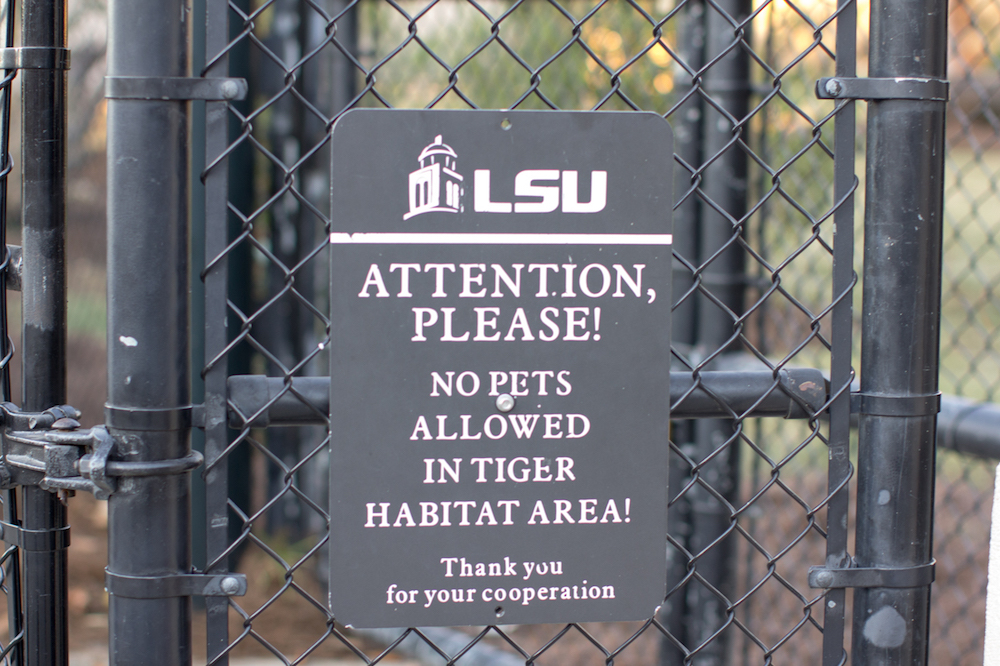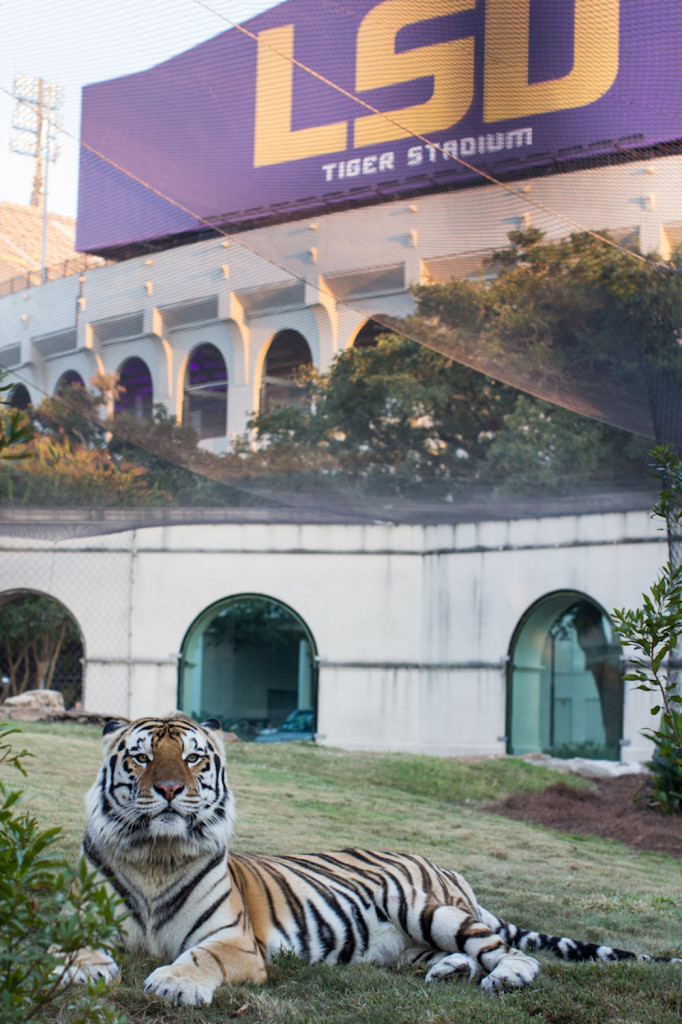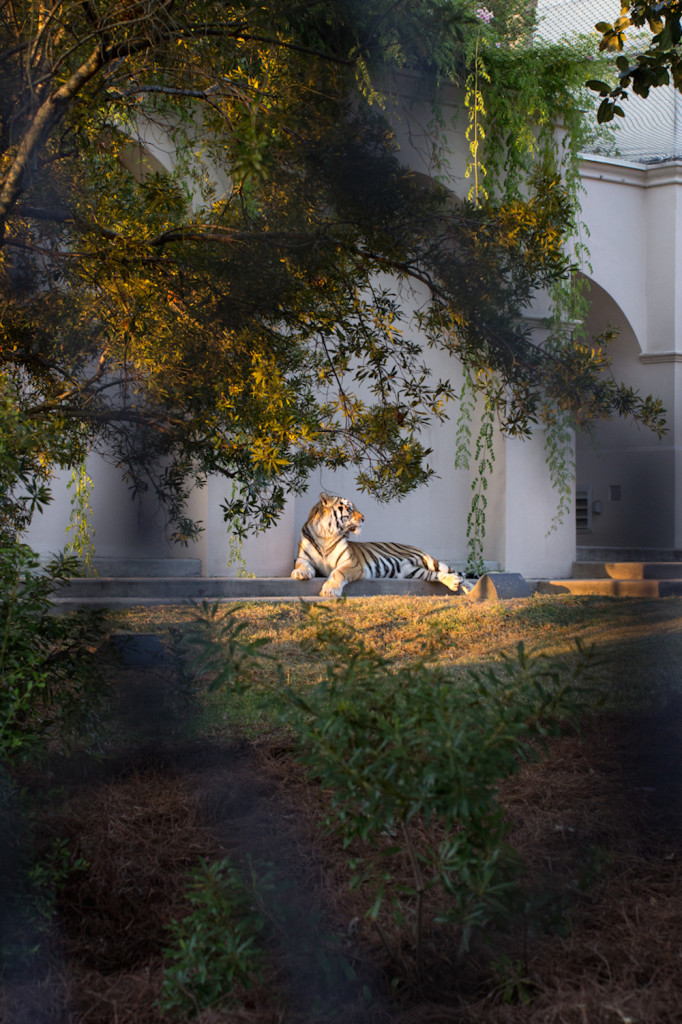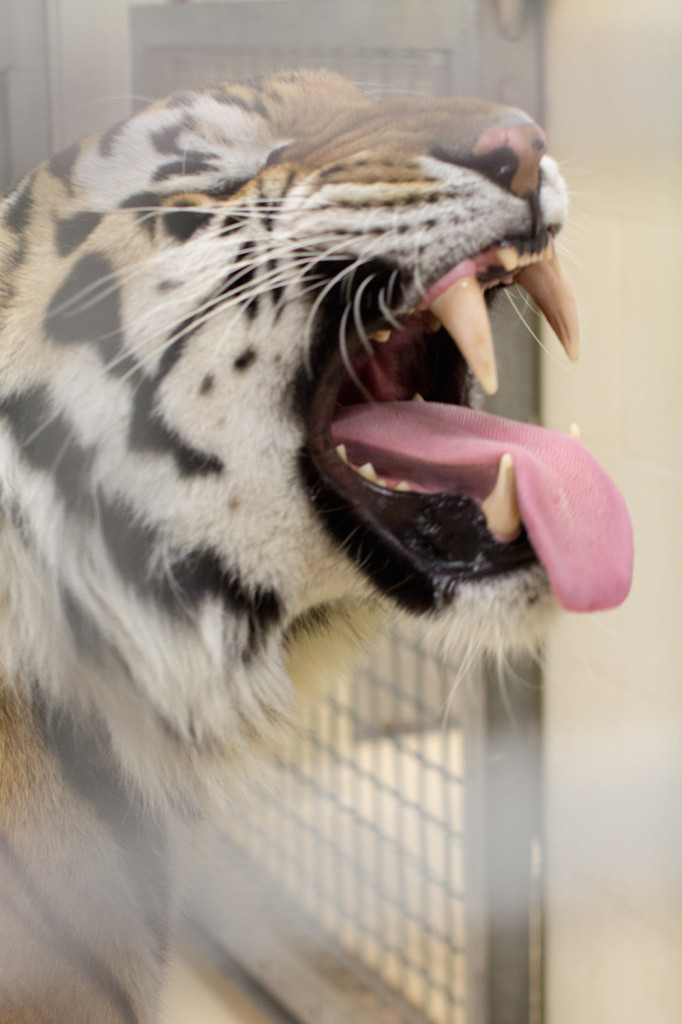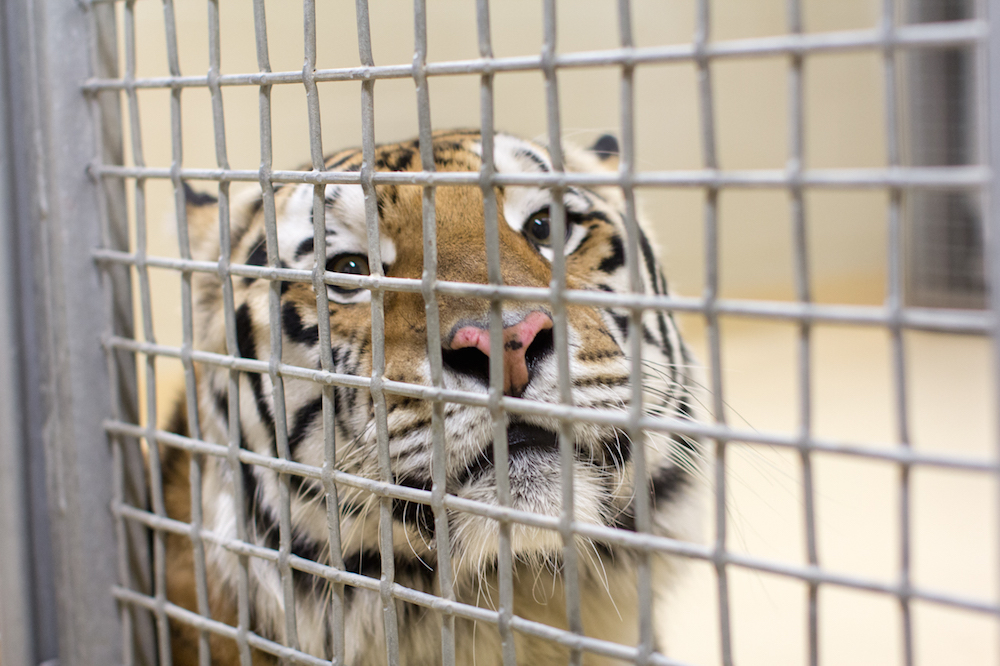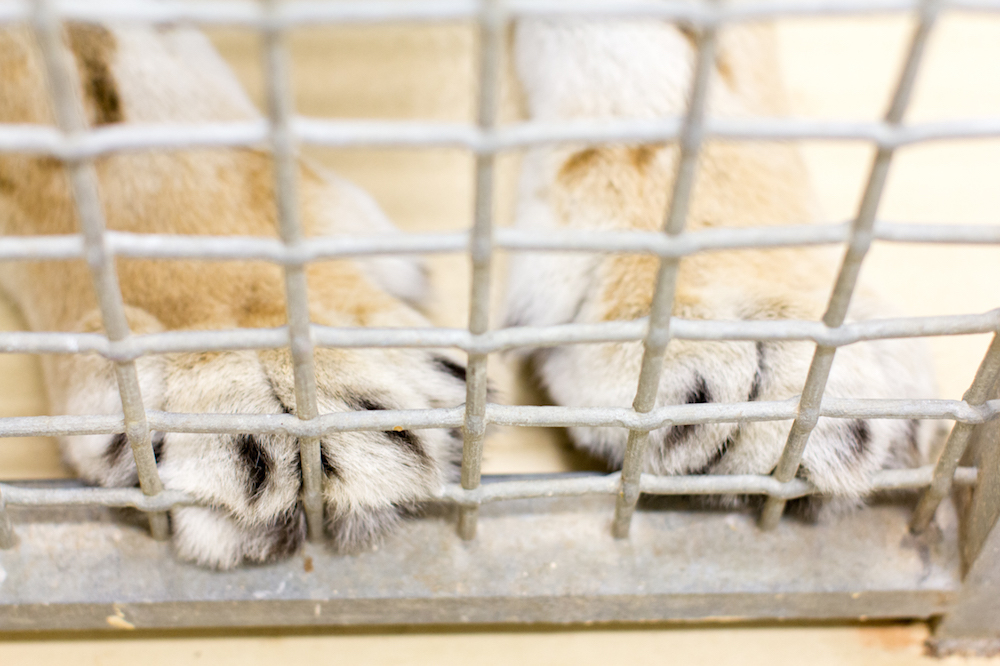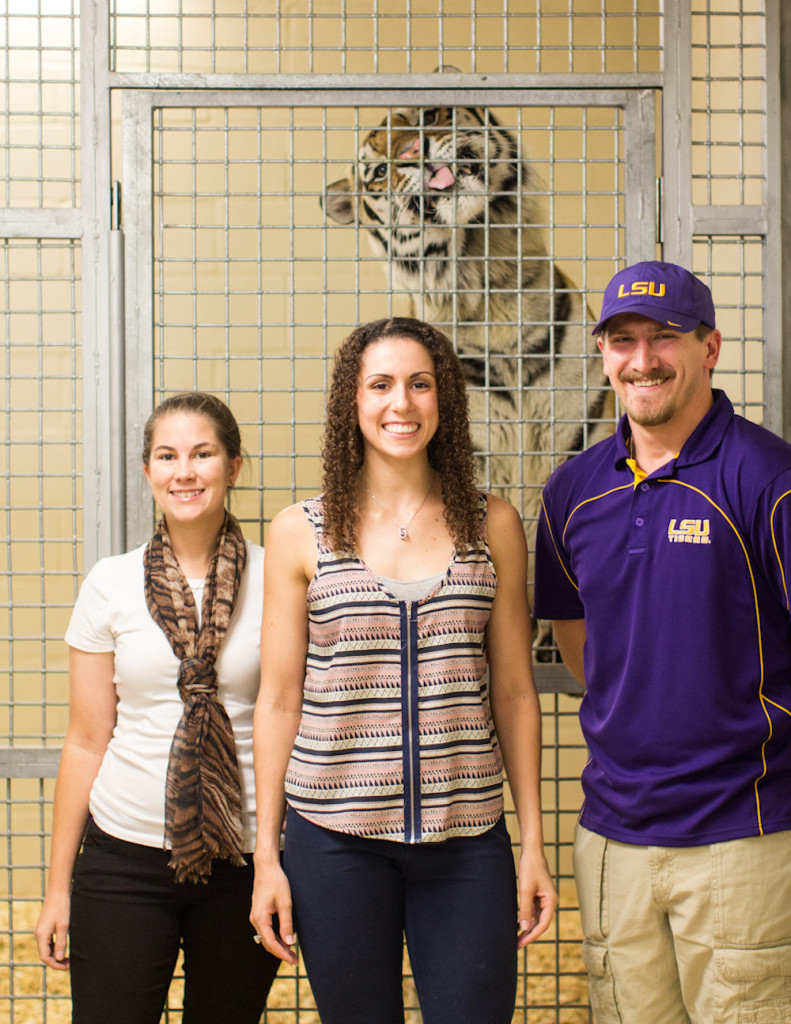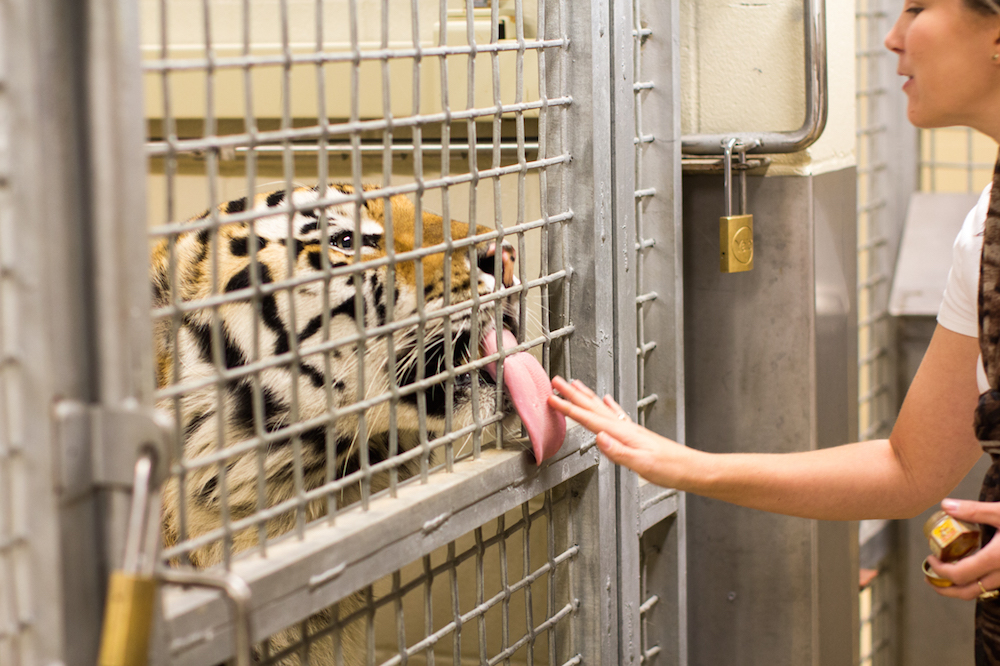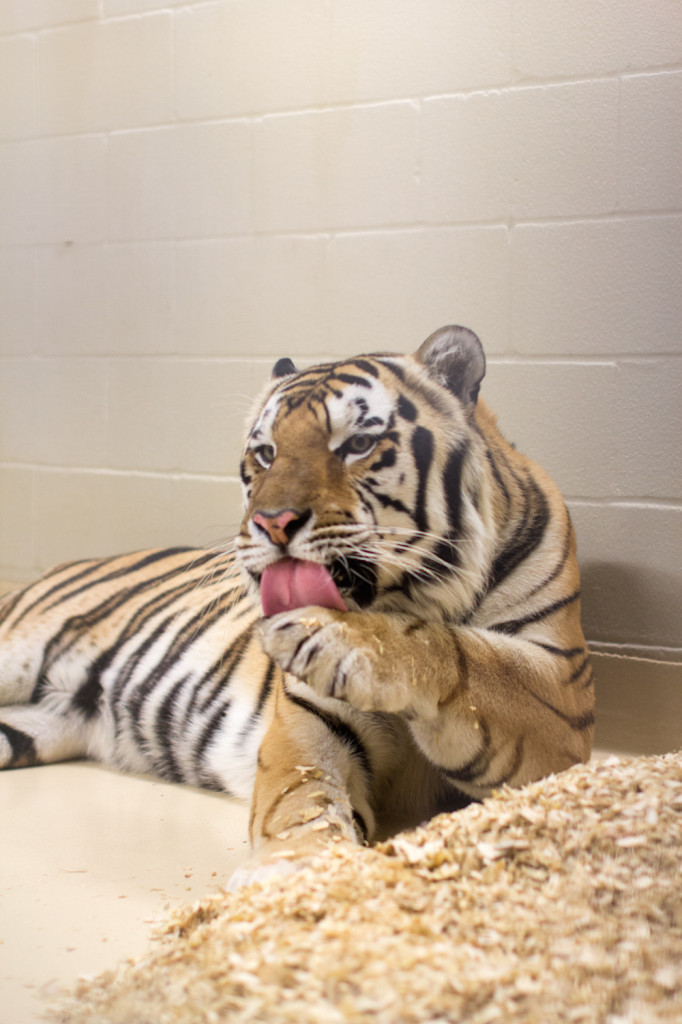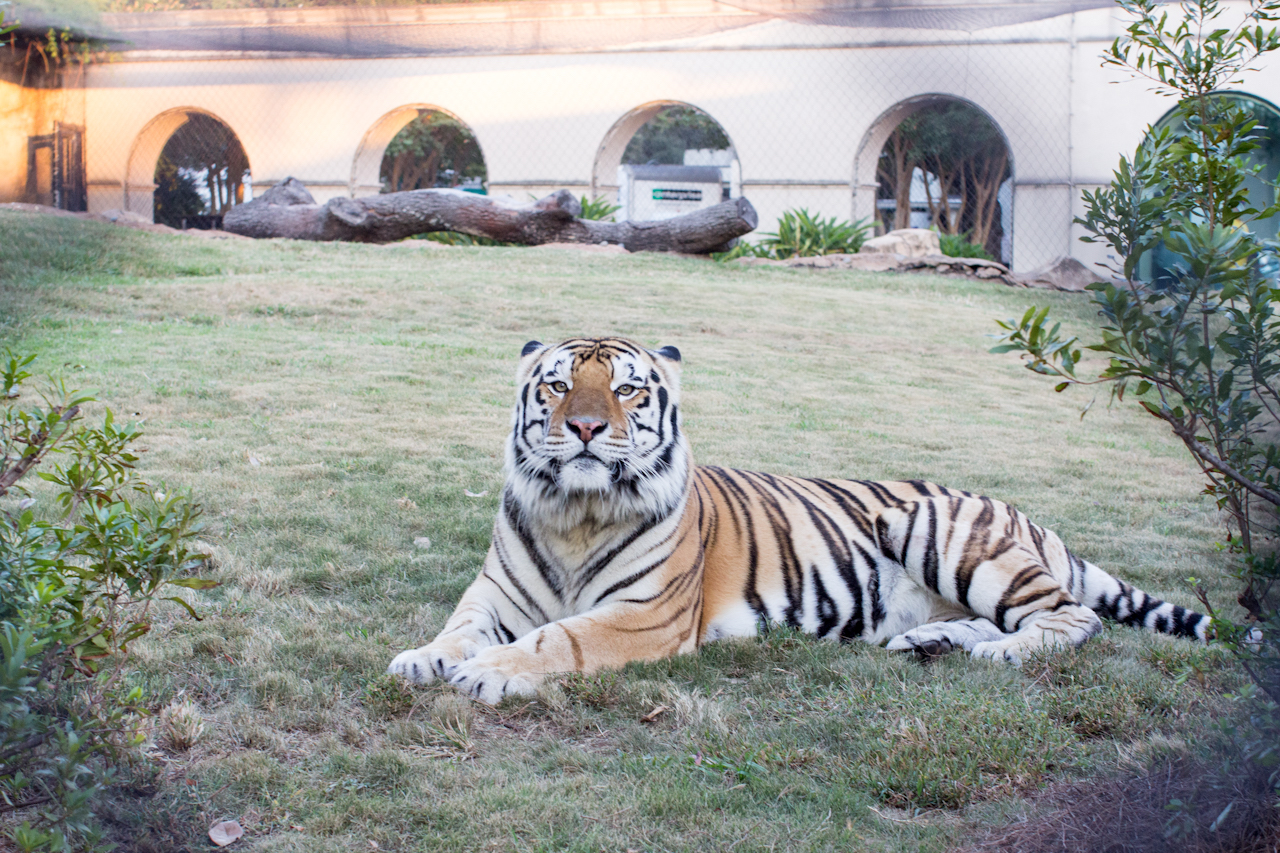
Meeting Mike the Tiger
One writer’s tour through the live mascot’s habitat
Trevor Davis rubs his thumb in a small container of Tiger Balm and raises his hand up high. A nearly 500-pound tiger stands on two feet and leans against the bars of his cage, licking the balm off his caretaker’s fingers.
“Lovable” is the one word Davis, a veterinary medicine student at LSU, would use to describe Mike the Tiger. His co-caretaker, Lindsey Clemones, would choose “handsome.”
I had the pleasure of meeting the oversized feline, and I can agree with both descriptions. During my visit, LSU’s mascot quickly turned from fierce and intimidating to sweet and enchanting.
|
|
Mike is separated from his admirers by two wrought-iron fences and a panel of glass. I got to cross those boundaries—or some of them, at least—for an afternoon.

Outside the 15,000-square-foot habitat, I met with Clemones, Davis and the vet school’s director of public relations, Ginger Guttner. The trio took me on a walking tour through Mike VI’s living quarters.
Our first stop was inside the habitat’s outer gate. We were still separated by one fence, but with a bond as strong as the one Mike has with caretakers, it may as well have been nonexistent. Mike rubbed against the fence and affectionately pushed his head into his caretakers’ hands, much like a housecat would.
Clemones says Mike doesn’t know his own name—or pretends not to—but the Bengali-Siberian hybrid recognizes both caretakers and usually responds to their calls.
After interacting with Mike outside, Clemones and Davis led me into the indoor portion of the habitat, where Mike sleeps and eats.
The inside of Mike’s cage has three chambers: a “dining room,” a “bedroom” and a workspace for the caretakers.
For their safety, the caretakers are never in the same room as the tiger, but that doesn’t prevent all physical contact.
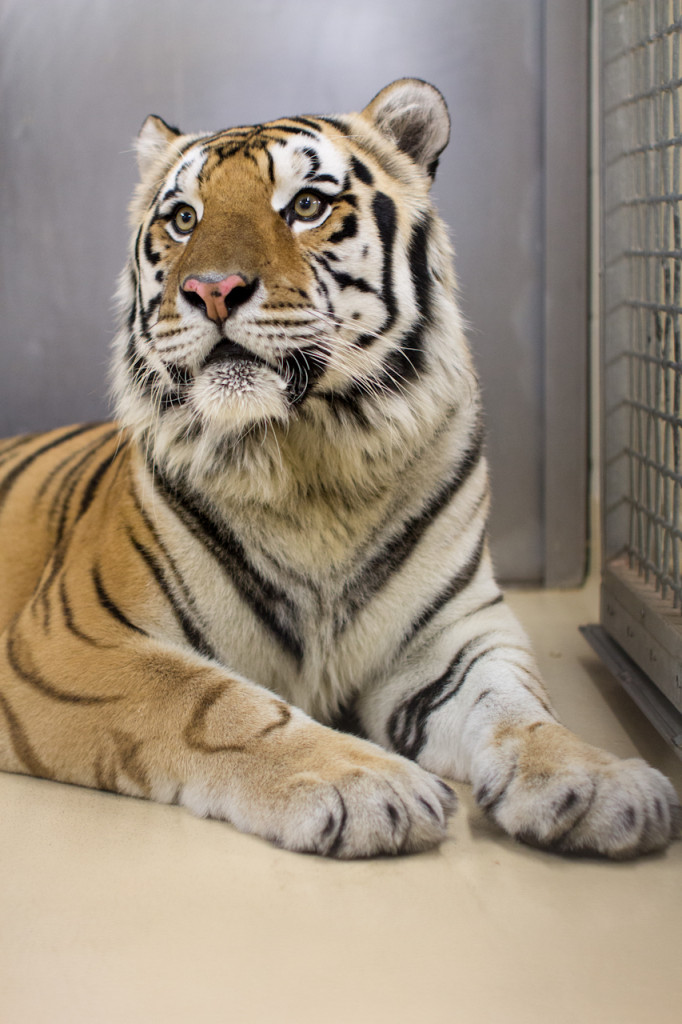
The bars separating Mike from his caretakers are just wide enough for humans to fit their arms through to pet Mike or let him lick their hands.
I, for one, was too scared to get close as the tiger paced the perimeter of his dining room.
Clemones says she and Davis have learned to distinguish Mike’s moods through facial expressions and body language, just like with domestic animals. The tiger makes a noise called a “chuff,” similar to a house cat’s purr.
The chuff is his happy noise, Clemones says. Reassuringly for me, he chuffed throughout my visit.
Clemones says Mike gets excited when it’s time to eat, and I have to admit I was pretty thrilled just to watch him eat. Maybe a little too excited, because I was slightly disappointed when he didn’t devour the 25 pounds of food set in front of him. Instead, he sniffed and prodded at it until he found the perfect bite and then took a few dainty nibbles.

Once satisfied, Mike plopped down next to his bed of mulch-like shavings, until Davis brought out a 30-pound purple ball covered in teeth marks. Conversation got difficult, because Mike repeatedly tossed his toy against the metal walls, making the room ring.
Outside the habitat, Mike the Tiger is elusive and mysterious. He is LSU’s mighty mascot, a terror to opposing teams.
But inside the barriers separating him from his fans, Mike VI is graceful, gentle and charming—unless he’s making a racket with his ball.
Want more Mike? Check out some of the outtakes from this 225 Adventure with photos by Chelsea Caldwell.
|
|
|
